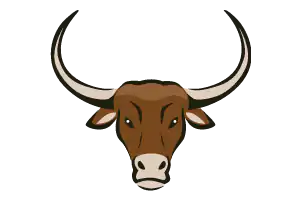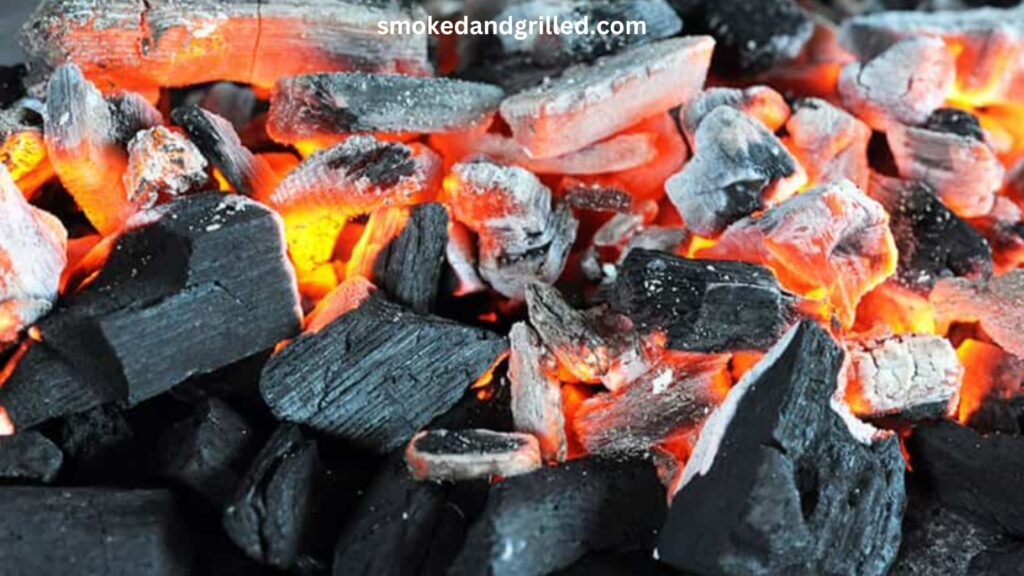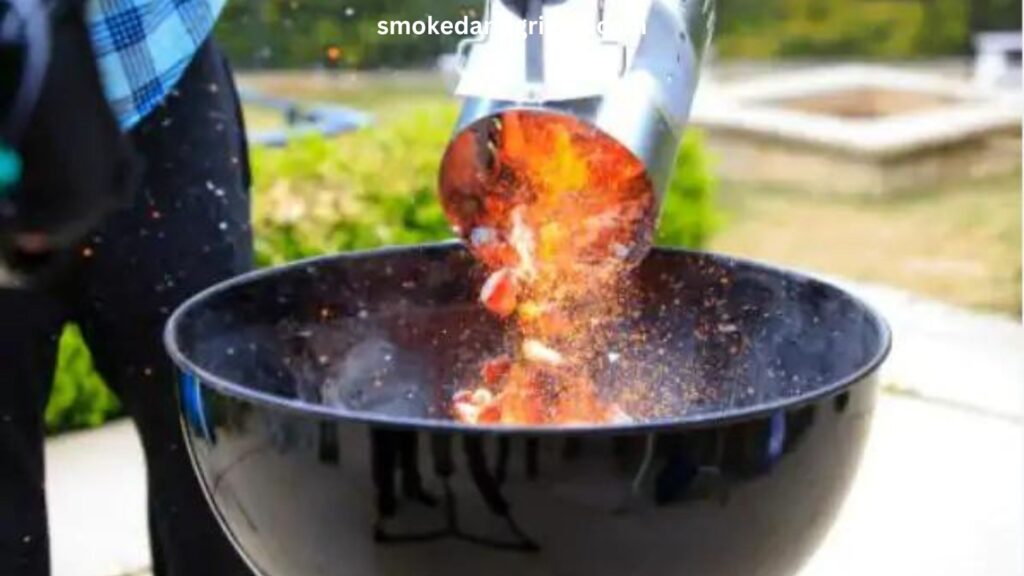Looking for ways to improve your backyard grilling? Look no further than lump charcoal, a burning wonder.
Because it is natural and clean, lump charcoal has become popular among people who like to grill because of its great qualities. Get ready for an adventure that combines taste, heat, and the thrill of the grill.
That’s all you need to do to bring out delicious flavours, make beautiful sear marks, and turn a regular cookout into a cooking adventure.
So, get ready to fan the flames and enjoy the ultimate grilling melody, where every bite is filled with the magic of lump charcoal’s captivating burn. Get fired up and let the feast begin!
Also Read:
Explanation of Lump Charcoal
Lump charcoal is a kind of fuel that is mostly used for grilling and barbecuing. It is made by burning wood without oxygen, which is called pyrolysis.
During this process, the wood is heated to high temperatures, which causes volatile compounds to escape and leaves behind lumps or chunks of carbonized wood. These chunks of charcoal still have the same shape and make-up as the pieces of wood they came from.
Lump charcoal is better than other kinds of charcoal, like briquettes, in a number of ways. It tends to burn hotter and faster, so it can be used to sear and cook food quickly.
It also makes less ash and other dirt, which makes grilling cleaner. Also, lump charcoal gives the food a distinct smoky flavor that makes it taste and smell better.
Lump charcoal is sensitive to airflow and venting, which is one of its most essential qualities. This means that it can be ready to cook in a short time, usually around 15 minutes.
It stays hot and ready to use for up to an hour, giving grillers plenty of time to cook their dishes.
Also, if you need more time to cook, you can add more charcoal to the fire at any time to make the grilling session last longer.
Overall, lump charcoal is a natural, versatile, and flavorful choice for people who like to cook outdoors.
Understanding The Burning Process Of Lump Charcoal
Understanding the burning process of lump charcoal involves delving into its chemical composition and how different factors can affect its performance.
Lump charcoal is primarily composed of carbon, with small amounts of hydrogen, oxygen, and other trace elements. During the pyrolysis process, volatile compounds, such as water and organic gases, are released, leaving behind the carbonized wood.
The availability of oxygen plays a crucial role in the burning time of lump charcoal. When oxygen is present, the carbon in the charcoal combines with it, producing carbon dioxide and releasing heat.
The more oxygen that reaches the charcoal, the faster and hotter it will burn.
This is why proper airflow and venting are essential for achieving optimal results. By controlling the airflow, grillers can regulate the burning rate and temperature of the charcoal.
A larger amount of charcoal will naturally burn for a longer period, providing an extended cooking time.
However, it’s important to note that the intensity of the fire might decrease over time as the charcoal burns down and produces less heat. To prolong the burning time, additional charcoal can be added to the fire at any stage. This replenishment ensures a continuous heat source, allowing for extended grilling sessions without interruption.
By understanding the chemical composition, oxygen availability, and quantity of charcoal used, grill enthusiasts can harness the full potential of lump charcoal for their cooking endeavors, achieving the desired heat levels and cooking times for deliciously grilled creations.
How Long Does Lump Charcoal Burn?
The burning time of lump charcoal can vary depending on several factors, including the size and density of the charcoal lumps, the amount of charcoal used, and the airflow or ventilation during the burning process.
However, it’s important to note that lump charcoal tends to burn hotter and faster than briquettes. The intense heat generated by lump charcoal allows for excellent searing and quick cooking of food.
While this high heat is desirable for specific grilling techniques, it also means that lump charcoal may have a shorter burning time compared to other types of charcoal.
To extend the burning time of lump charcoal, additional charcoal can be added to the fire as needed. This replenishment ensures a continuous heat source, allowing for prolonged grilling sessions without the need to start a new fire.
It’s worth noting that the burning time of lump charcoal can also be influenced by external factors such as weather conditions and the efficiency of the grill or barbecue equipment.
Therefore, it’s recommended to monitor the burning process and adjust accordingly to achieve the desired cooking results.
Why Does My Lump Charcoal Burn Out So Fast?
There could be several reasons why your lump charcoal burns out quickly. Here are a few possibilities:
1. Poor Quality Charcoal
The quality of lump charcoal can vary, and if you’re using a low-quality brand, it may not be densely packed or may contain a lot of smaller pieces. This can result in faster burnout.
2. Insufficient Airflow
Charcoal requires proper airflow to burn efficiently. If your grill or smoker doesn’t have adequate ventilation, it can lead to incomplete combustion and faster burnout.
3. Improper lighting Technique
Starting the charcoal properly is crucial. If you don’t allow enough time for the charcoal to ignite fully before cooking, it may not reach its optimal temperature and burn out faster.
4. Lack Of Charcoal Maintenance
If you don’t maintain your fire by adding more charcoal as needed, the existing charcoal will burn out quickly, especially for long cooking sessions.
5. Overloading The Grill
Overloading the grill with too much charcoal can limit airflow and cause the charcoal to burn out faster. Consider evaluating these factors and making adjustments to improve the burn time of your lump charcoal.
Different Types Of Lump Charcoal And Their Burning Time
| Type of Lump Charcoal | Description | Burning Time |
| Hardwood Lump Charcoal | Made from natural hardwood like oak, hickory, or maple | Longer burn time |
| Mesquite Lump Charcoal | Derived from mesquite hardwood, offers a strong flavor | Hot and fast burn |
| Fruitwood Lump Charcoal | Made from fruitwood trees like apple, cherry, or pecan | Moderate burn time |
| Coconut Shell Lump Charcoal | Made from coconut shells, burns hot, unique flavor | Quick burn, may require more refueling |
| Blended Lump Charcoal | Combination of different hardwoods or with other materials | Variable burn time |
Hardwood Lump Charcoal
Made from natural hardwood, such as oak, hickory, or maple, hardwood lump charcoal is known for its long burn time. It typically burns hotter and slower compared to other types of charcoal.
Mesquite Lump Charcoal
Mesquite is a hardwood known for its strong and distinct flavor. Mesquite lump charcoal tends to burn hot and fast, making it suitable for quick grilling sessions.
Fruitwood Lump Charcoal
Fruitwood lump charcoal is made from hardwood trees like apples, cherries, or pecan. It offers a mild, fruity flavor and has a moderate burn time, making it suitable for grilling and smoking.
Coconut Shell Lump Charcoal
Made from coconut shells, this type of lump charcoal burns at a high temperature and provides a unique flavor. It tends to burn quickly and may require more frequent refueling.
Blended Lump Charcoal
Some brands offer blended lump charcoal, which is a mix of different hardwoods or a combination of hardwood and other materials. The burn time of blended charcoal can vary based on the composition.
The Best Environment for Burning Lump Charcoal
Open Flame vs. Enclosed Firebox
Burning lump charcoal in an open flame setting, such as a fire pit or grill, allows for direct exposure to oxygen. This promotes a hotter and more rapid burn, which is suitable for quick grilling or searing.
Utilizing an enclosed firebox, such as a charcoal smoker or kamado-style grill, provides better temperature control and allows for longer, slow-burning cooks.
The enclosed environment helps retain heat and smoke, creating an ideal setup for low-and-slow cooking methods like smoking or roasting.
The Best Cooking Techniques for Slow and Steady Burns
Smoking involves cooking food over low, indirect heat for an extended period. This technique infuses the food with a smoky flavor and produces tender, flavorful results. A charcoal smoker or a grill with a smoking accessory is typically used for this method.
It is ideal for more significant cuts of meat, such as whole chickens or roasts. A grill or an enclosed charcoal oven can be used for roasting.
Weather Conditions that Affect Burning Time
1- Wind
Wind can affect the burn time of lump charcoal. Strong winds can increase the oxygen supply to the fire, causing the charcoal to burn hotter and faster.
It’s important to consider wind direction and intensity when setting up your charcoal grill or smoker.
2- Temperature
Ambient temperature can also influence burning time. In colder weather, it may take longer for the charcoal to reach its optimal temperature, and it may burn more slowly as a result. In hotter weather, charcoal may ignite faster and burn more quickly.
3- Humidity
High humidity can impact burning time by affecting the charcoal’s ability to ignite and maintain a consistent burn. Charcoal may take longer to light and may burn less efficiently in humid conditions.
4- Rainfall
Rainfall can extinguish charcoal fires and make it difficult to light the charcoal in the first place. It’s generally advisable to protect your charcoal and grill from rain or use alternative cooking methods if the weather is wet.
The Impact of Food Type On Burning Time
There are many kinds of food, each of which has its unique characteristics that can affect the amount of time it takes to burn. The length of time it takes an item to cook is often determined by factors such as its size and thickness.
In general, larger and thicker cuts of meat or vegetables require additional time to cook to the desired degree of doneness, which in turn lengthens the overall cooking process.
When cooked, foods that have a higher moisture content, such as meats and vegetables that are juicy, can release some of that moisture.
This moisture has the potential to make the cooking environment cooler, which could result in the cooking time being increased.
Flare-ups and an increase in surface temperature can be brought on by certain foods, such as marbled cuts of meat, that contain a higher percentage of fat. It’s possible that this will cause the charcoal to burn more quickly.
The Role Of Cooking Technique In Burning Time
The cooking technique employed also plays a role in burning time:
1. Direct Grilling
This technique involves cooking food directly over high heat. It generally requires a shorter cooking time as the food is exposed to intense heat and direct flames.
2. Indirect Grilling
Indirect grilling utilizes a two-zone fire setup, where the charcoal is placed on one side of the grill and the food on the other.
This method allows for more controlled cooking, often at lower temperatures, and can prolong the burning time of charcoal.
3. Smoking
Smoking typically involves low and slow cooking over indirect heat with the addition of wood chips or chunks for smoke flavor.
This technique extends the cooking time significantly, as foods are cooked at lower temperatures over an extended period.
Maintaining A Clean Grill For Optimal Charcoal Performance
When it comes to cooking on a grill, many people choose to use lump charcoal as their fuel of choice because it burns hotter and for a longer period of time, and it is also more natural.
As a consequence of this, it is essential to remove any ash that has been left behind and to keep the temperature on the grill consistent.
When the coals are ready to be heated, they will have gray ash covering them, and the edges of the coals will have a gray tint to them.
The duration of this process is typically fifteen minutes, but this time can differ significantly depending on the charcoal that is being used. As soon as the coals are mostly covered in ash and are ready to be spread out, the grilling process can begin.
Frequently Asked Questions
Can You Reuse Partially Burnt Charcoal?
You can, in fact, reuse charcoal that has only been partially burned. In the event that there are still pieces that can be used, you can shatter them into smaller pieces and combine them with fresh charcoal so that they can be used in the future.
However, keep in mind that the charcoal that has been partially burned might not ignite as quickly or burn as efficiently as fresh charcoal if you use it.
Are Natural Charcoals More Environmentally Friendly?
When compared to briquettes made with additives and binders, natural charcoals are generally considered to be more environmentally friendly.
The production of natural charcoal typically involves the use of hardwood, and it does not include any additives or chemicals. They have a lower potential for producing ash and a smaller overall carbon footprint.
How To Control The Burning Time Of Lump Charcoal?
You can adjust the airflow and oxygen supply to control the amount of time it takes for the lump charcoal to burn. When there is less air present, the fire will burn at a lower temperature but at a slower rate than when there is more air present.
You can control the amount of time something burns by adjusting the vents on your grill or smoker. This will help regulate the airflow.
What Burns Longer: Lumpwood or Charcoal?
The burning characteristics of briquettes and lump wood charcoal are completely distinct from one another. Briquettes, as opposed to lump wood charcoal, have a tendency to burn for a longer period of time and more consistently.
Briquettes are more dense than logs and have a more consistent shape, both of which contribute to a longer burn time. Lumpwood charcoal produces more heat than other types of charcoal, making it ideal for grilling and searing.
How Long Should Charcoal Burn Before Spreading?
Before using charcoal for cooking, it should be burned until it is completely ignited and covered with a layer of gray ash. Only then should it be spread out.
This can take anywhere from twenty to thirty minutes, depending on the type of charcoal you are using and the airflow in the grill or smoker you are using.
Before spreading the charcoal out, make sure the flames have died down and the charcoal is glowing red. This will ensure that the heat is distributed evenly.
How Long Will Kingsford Charcoal Burn?
The amount of time that Kingsford charcoal will take to burn can change depending on a number of factors, including the method of cooking, the amount of charcoal that is used, and how the airflow is controlled.
In general, Kingsford charcoal briquettes have a burn time of approximately one to two hours when used for grilling. On the other hand, if you want to cook or smoke for a longer period of time, you might need to add more charcoal as the occasion demands.
Can Soak Charcoal Burn for Longer?
Charcoal that has been wet will have a more difficult time igniting and keeping a consistent burn going. Lighting wet charcoal takes more time, and the higher water content of wet charcoal can result in a shorter burn time.
Before using charcoal, it is best to let it dry out thoroughly first. This will ensure that it burns more efficiently and for a longer period of time.
How to Detect When Charcoal is Fully Burnt?
Once the charcoal has been completely consumed by fire, it will turn into ash and no longer have the glowing red or orange appearance it had before.
You can verify that the charcoal is done by visually examining it and making sure that it has turned to ash, or you can check to see if it is done by tapping it gently with a utensil to see if it crumbles easily.
Charcoal that has been completely consumed will produce an ash that is a grayish-white color and will not produce any visible flames.
Does Lump Coal Burn Longer Than Charcoal?
Lump coal, which is also referred to as natural lump charcoal, is a kind of charcoal that is typically made from hardwood and has another name. It is possible that its burn time will be comparable to that of other types of charcoal.
The length of time that the charcoal will burn is contingent on a number of factors, including the size of the lumps and the precise makeup of the charcoal.
For purposes of grilling and cooking, a sufficient burn time can be obtained from other types of charcoal in addition to lump coal.
Conclusion
Lump charcoal is a blazing star that will bring the heat to any of your grilling endeavors. It can be lit with little effort and burns with great ferocity, which results in a cooking experience that is both intense and full of flavor.
The burning time of lump charcoal may be shorter compared to that of briquettes; however, due to its versatility, it is possible to make adjustments and additions to the fire in order to keep it going.
Lump charcoal is your reliable sidekick for imparting that irresistible smoky flavor into whatever you’re cooking, whether you’re trying to sear steaks to perfection or cook tender ribs over low heat for a long time.
Now is the time to round up all of your grilling utensils, master the technique of controlling the airflow, and wait for the flavor explosion that lump charcoal will bring about.
Prepare to take your outdoor cooking to the next level and craft mouthwatering masterpieces that will leave your guests begging for more.
The flames should be allowed to dance, and your taste buds should be allowed to revel in the enticing embrace of lump charcoal.



